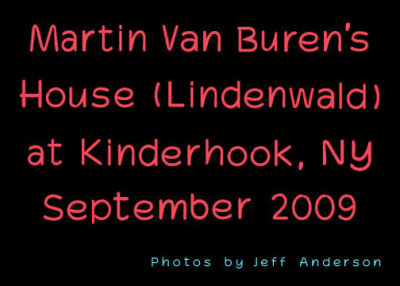
Martin Van Buren's House (Lindenwald) at Kinderhook, NY cover page. |
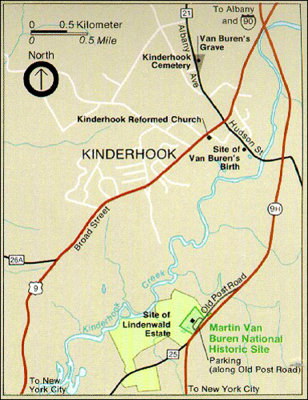
Map of Kinderhook, NY showing the location of Martin Van Buren's house, Lindenwald. |

Martin Van Buren, age 56, painted by John Langendoerffer in 1838 (now in the National Portrait Gallery, Smithsonian Institute). |

Hannah Van Buren as a young women. She died at age 35 of tuberculosis. Painting is now part of the Granger Collection, New York. |

Photograph of Martin Van Buren (1782–1862) shortly before his death (ca. 1860-1862). He died at age 79. |

Sign describing renovations done (1849-50) by architect Richard Upjohn. The house was built (1797) by Judge Peter Van Ness. |
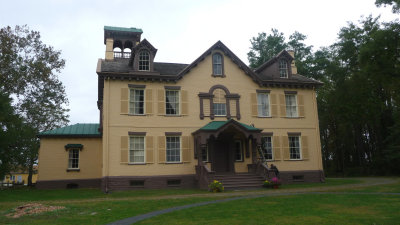
Architect Upjohn painted the brick yellow and brown and added the 4-1/2 story Italianate tower to break up the symmetry. |
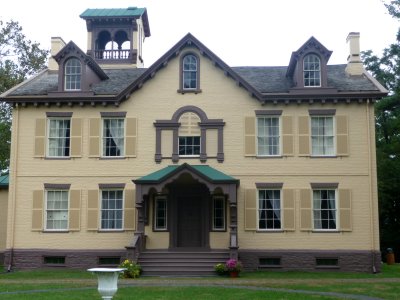
A Gothic Revival porch and Victorian tracery were added, as well as more rooms for the former president’s family and guests. |
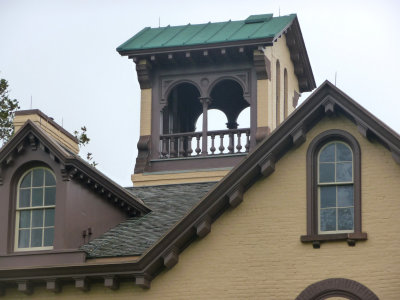
Close-up of the the 4-1/2 story Italianate tower added by the architect, Upjohn. |
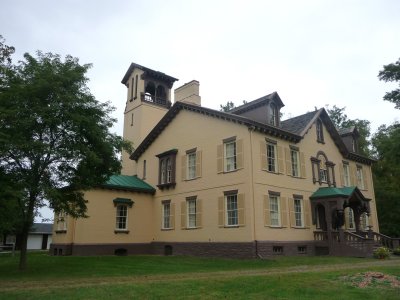
A southern view of Martin Van Buren's house. |

A northern view of Lindenwald. |
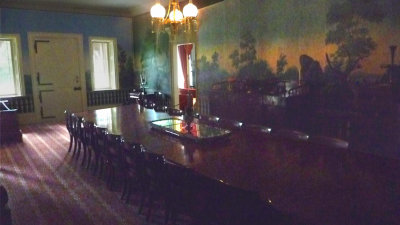
The Main Hall, with French wallpaper and a banquet table, served as a family dining room and for conducting political business. |
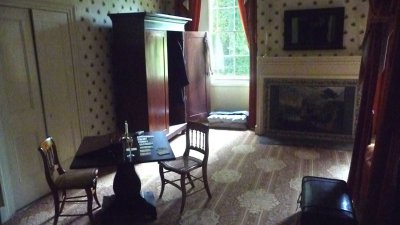
View inside the Best Bedroom, which was on the ground floor and reserved for Lindenwald's honored guests, such as Henry Clay. |
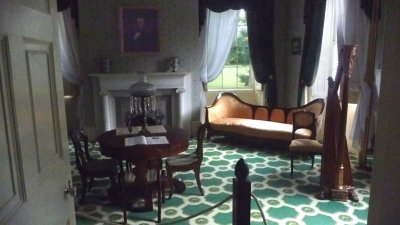
The Green Room was used for socializing after dinner. |
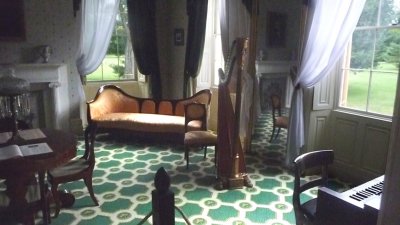
The room contains a harp and an organ. Music, parlor games and reading aloud filled the evenings at Lindenwald. |
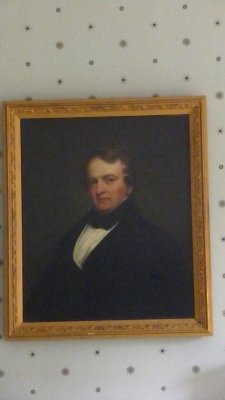
Portrait in the Green Room, probably of one of Martin Van Buren's four sons. |

The Formal Parlor where politics was discussed with traveling politicians. |
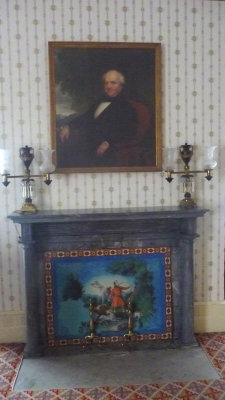
Portrait of Van Buren in the Formal Parlor. He got the nickname, "Little Magician," for his silver tongue with politics. |

Piano in the Formal Parlor. Obviously, music was important in the Van Buren family. |

The portrait of Thomas Jefferson in the Formal Parlor must have added gravitas to the political discussions there! |
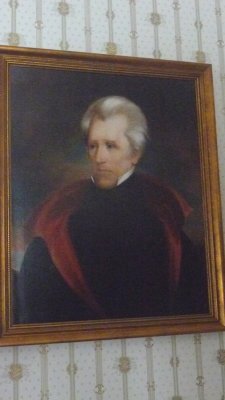
Martin Van Buren owed his presidency to his predecessor, Andrew Jackson, who made him Secretary of State and Vice President. |

The Breakfast Room was more intimate for dining with family or friends and associates. |
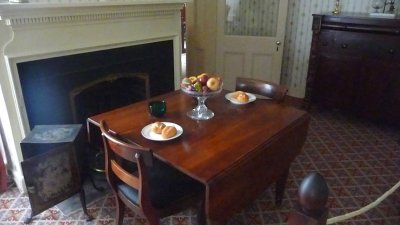
The table is set with a simple breakfast of bread and fruit. |
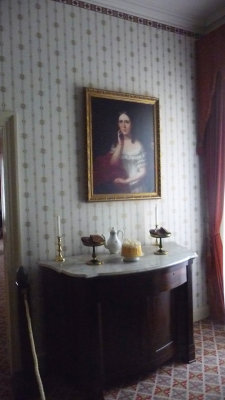
Breakfast Room portrait of Mary Singleton McDuffy Hampton, the niece of the wife of Van Buren's oldest son, Abraham. |

Hampton visited Lindenwald frequently, and she was very fond of the former president. |

The Kitchen is located in the cellar and was always bustling with activity to feed all the family and frequent guests. |
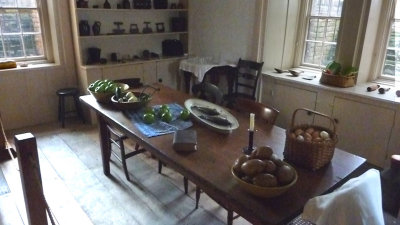
The table was set up to look the way it did when Martin Van Buren lived there. |
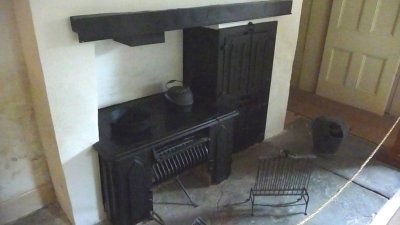
The Kitchen had the most modern appliances of its day, with a coal burning stove, a hand-operated pump and running water. |
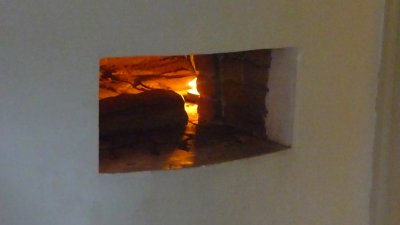
The oven in the Kitchen was used frequently to prepare all of the meals served in Lindenwald. |
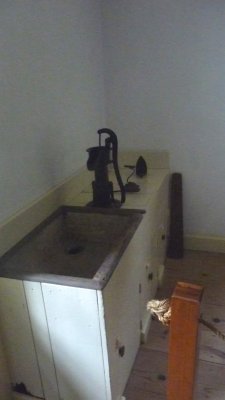
The hand-operated pump that provided the running water in the Kitchen. |
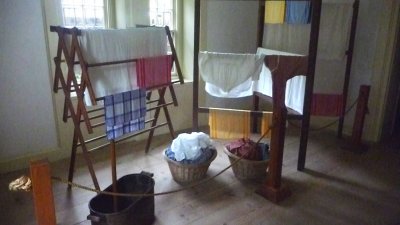
Also, in the cellar is the Laundry Room. Van Buren was obsessive about cleanliness and changed his clothes 3 times a day! |
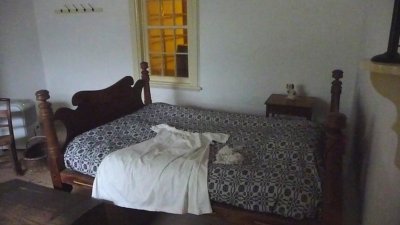
The Servant's Bedroom. Van Buren also bathed every day, which was unheard of in his day when people bathed once a week, or less! |

The Servant's Bedroom was for those who lived in Kinderhook. Most were Irish potato famine refugees. |
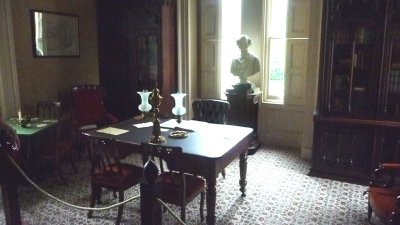
The Library was another room where Martin and his guests would retire after dinner to talk politics. |
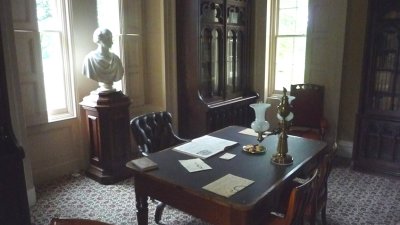
Before the outbreak of the Civil War, the discussions were over the issue of slavery and of how to hold the Union together. |
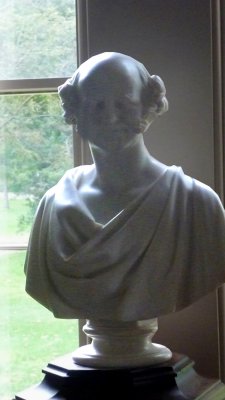
A marble statue of Martin Van Buren in front of the window in the Library. |

Political cartoons were popular in Martin Van Buren's day (before the time of television and the Internet). |
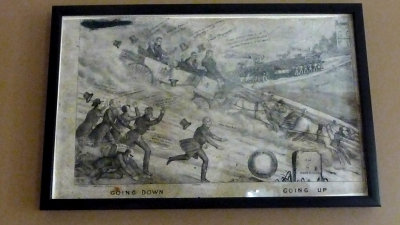
This is one of the four political cartoons about his Presidency that are on display in the Library. |
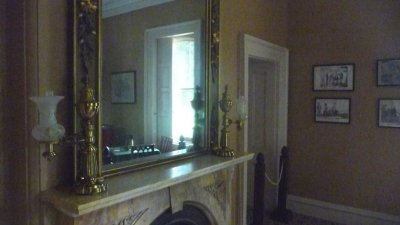
Beyond the fireplace, mantlepiece and mirror, the political cartoons can be seen hanging on the Library wall. |
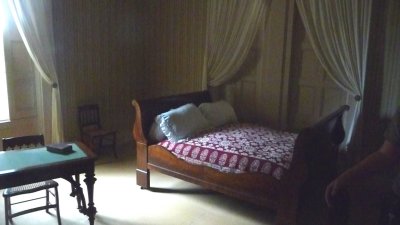
Smith's Bedroom was used by Van Buren's youngest son, Smith, who moved to Lindenwald with his family in 1849. |
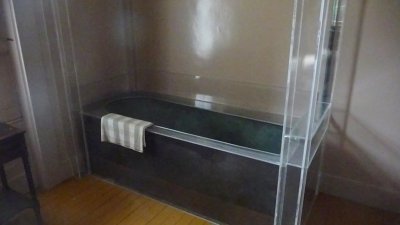
Smith instigated many of the improvements to the house, including a coal furnace and running water. |
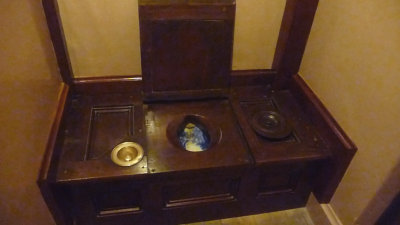
Smith's most novel modernization was an indoor flush toilette, the first one ever north of New York City! |
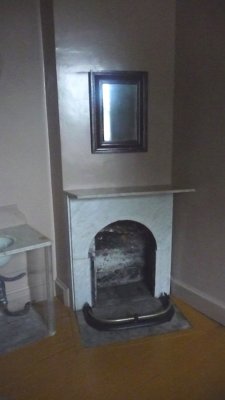
Fireplace in the bathroom to keep warm during the colder months of the year. |
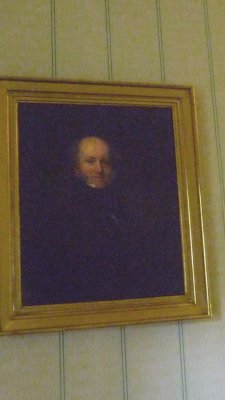
Portrait of Martin as a younger man, which hangs in Lindenwald. |
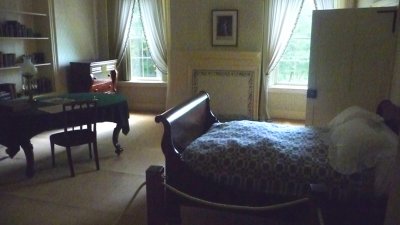
John's Bedroom, where Martin's second son, John Van Buren, slept. He was a lawyer and served as Attorney General of New York. |
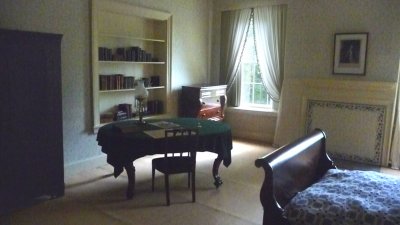
Like his father, John lost his wife, Elizabeth Vanderpoel, after only a few years of marriage. |
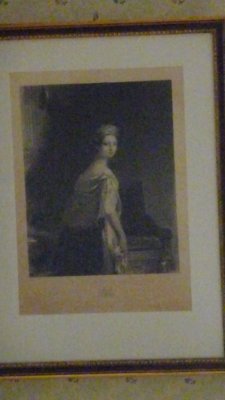
This is probably a portrait of Elizabeth Vanderpoel since it hangs in John's Bedroom. |
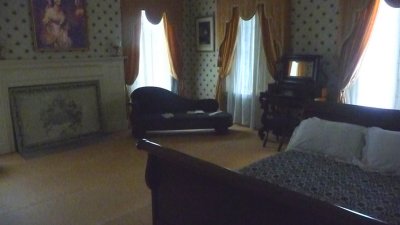
Abraham's Bedroom, Martin's first son. He was introduced by Dolly Madison to his wife Angelica at Martin's inaugural ball. |

Portrait of Angela Singleton. She came from a slave holding family, a problem for Martin who opposed slavery. |
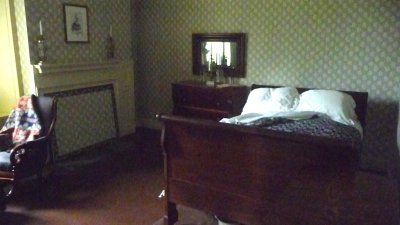
Martin Jr's Bedroom, the 3rd son. He was sickly and died of consumption at 42. He was fond of European ballerina, Fanny Eisler. |
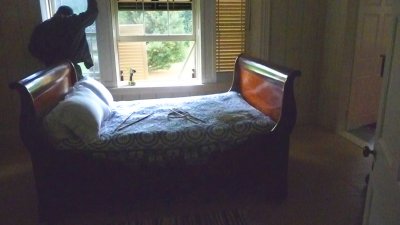
The middle bedroom out of 5 on the 2nd floor is the Guest Bedroom. That's a workman at the Palladian window! |

The President's Bedroom, located in the sunny southeast side of the house. |
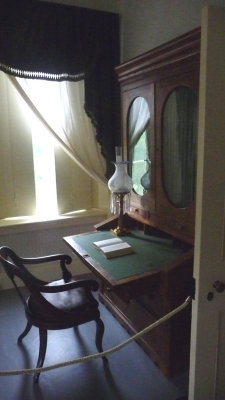
A writing desk for the former president. |
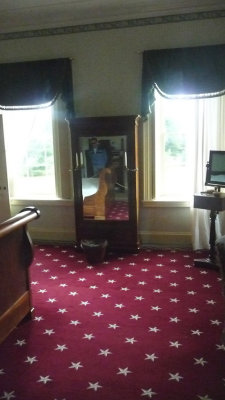
There are personal mementos in the room including Andrew Jackson's hickory cane and a "Martin Van Buren for President" cap. |
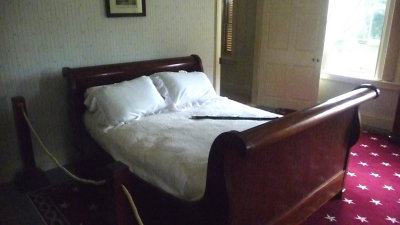
Martin Van Buren died a troubled man on this bed in 1862, knowing that the Union he tried to hold together had split apart. |











